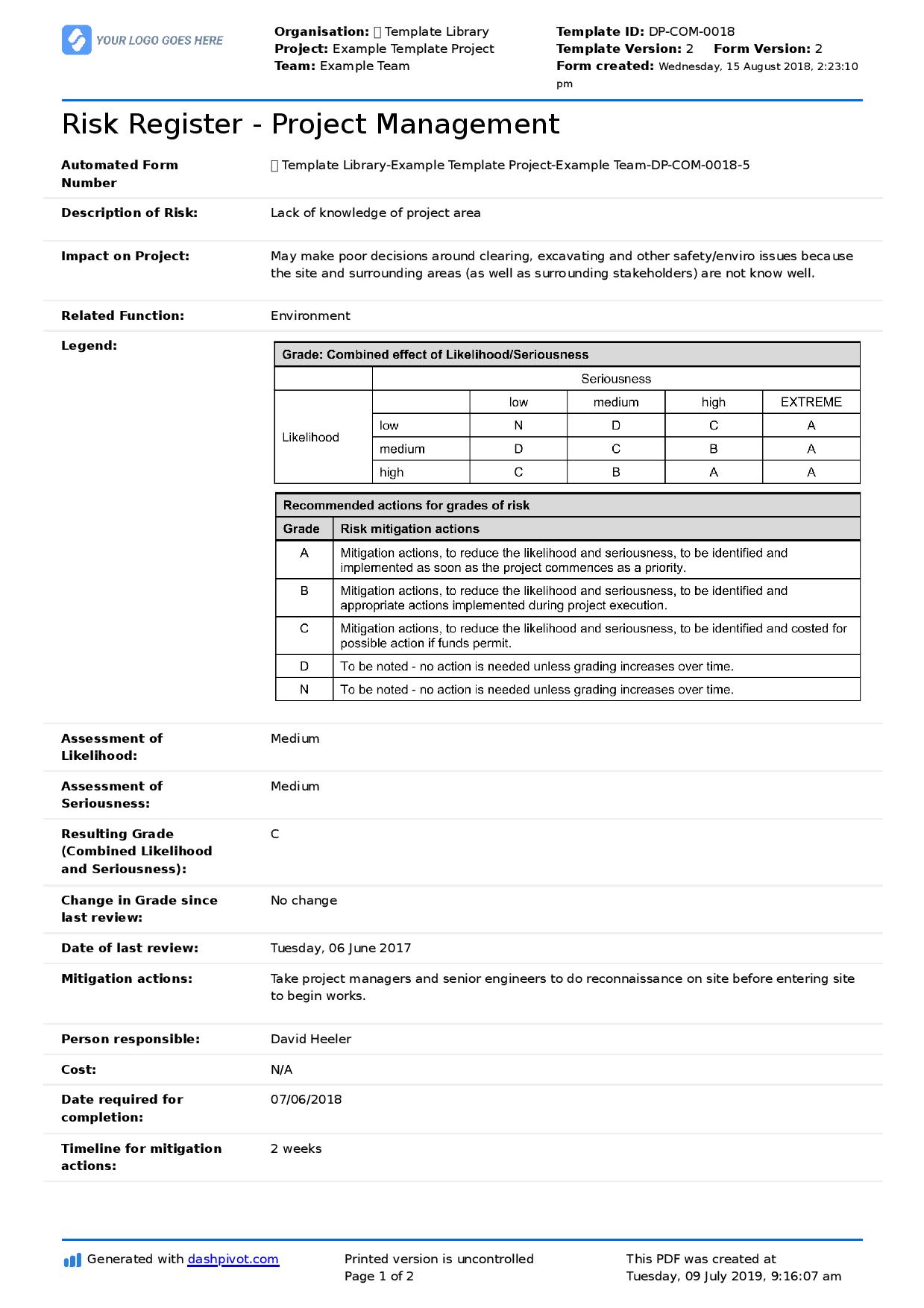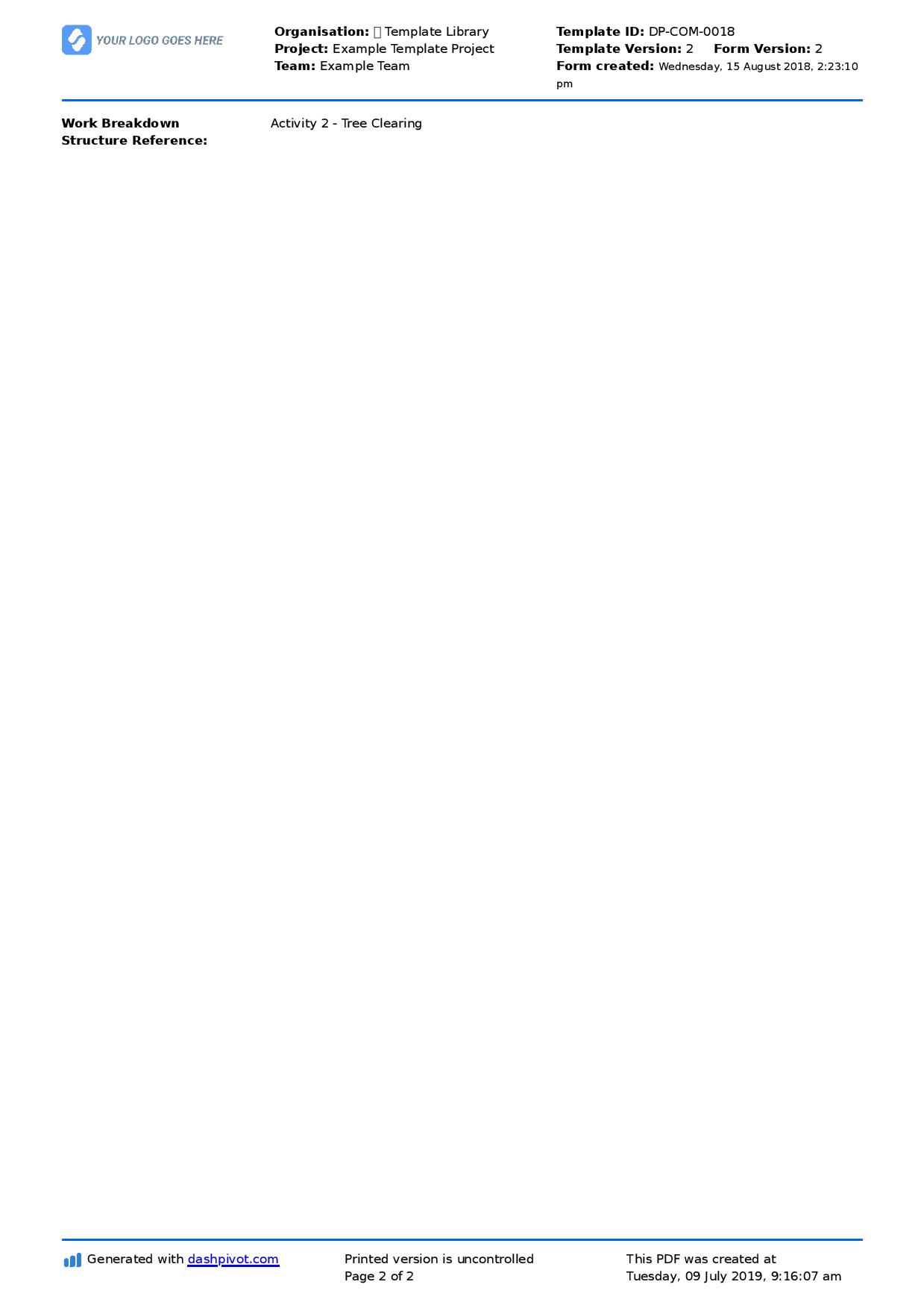Safety – Risk logs
Risk log: Everything you need to know about risk logs

What is a risk log?
A risk log (sometimes interchangeably referred to as a risk register) is a framework and tool which projects and companies use to identify, evaluate and mitigate risk.
A risk log almost always takes the form of a register, where each row represents a risk and each column represents an element or characteristic of this risk.
Risk logs are usually created at the start of a project or phase of works when a project manager and team are assessing upcoming risks. The risk log is then updated, maintained and referenced throughout the life of the project.
Risk management is a critical and perpetual activity for all project based companies in many industries like construction, oil and gas, mining and manufacturing. In these high-risk industries, mitigating risk is one of the most important aspects of good and safe project delivery.
A risk log can feature any kind of risks, and how you create and arrange your risk logs will depend on the nature of your business as well as the resources at your disposal.
Risk logs can and should identify safety, commercial, financial, environmental and production related risks. You may have more categories beyond these which are applicable to your business.
Because risk is cyclic and ongoing, risk logs aren't stationary documents. They are living and breathing documents which need to be updated and collaborated on so that entire companies and teams understand how risk is being approached and managed.
A risk log is of course not the only tool for risk management, especially for field and site based companies. These companies need to make sure they don't over-rely on documents lie risk logs, and instead use them as tools which empower project managers, safety managers and other people to make better more informed decisions about how to actually get better results during work.
Establishing the right framework and right tools for managing risk logs is critical to ongoing risk management - so let's look at a risk log example.
Risk log example
You are probably pretty familiar with risk register templates and frameworks, and as you'll see from the risk log example below, they share many similarities and can often be used interchangeably.
The most important columns and features of any risk log are (all of which you can see in the example below):
- Description of the risk - Risk logs are collaborative documents. While there may be a project manager who owns the risk log, other people will want to or need to access and reference the log. These people should be able to see and understand the risk quickly, and a description really helps as they might not have the context that the risk creator or identifier had.
- Impact on project - Looking at risks in a vacuum isn't incredibly helpful or practical. All companies and projects care about how risks are applicable to them, and this comes back to the impact that the risk can have on a project - whether that be through possible delays, injuries or compliance issues.
- Related function - As we already discussed, grouping and categorising functional risk can be really important for workers and companies, especially as projects become larger. If you organise and group your risks properly, it will be easier to delegate specific risks and ensure every risk is handled by the appropriate person.
- Assessment of likelihood and seriousness, and the resulting risk 'grade' - One of the most important aspects of a risk log is that it provides a company with a macro-level view of all of the different risks, which enables prioritisation. The two axis with which prioritisation are made are the likelihood of the risk eventuating and the seriousness of an event stemming from that risk. The combined 'score' of these two dimensions (the score is a standardised score based on a standard risk matrix) gives us a risk grade which can then be used to decide which risks need to be dealt with.
- Change in grade and time since last review - Understanding how risk is evolving over time is really important to deciphering how well the company is managing risk. Outside of unexpected forces, most recurring risks should become less risky. Companies and workers should learn how to better manage risk over time. Understanding how a risks grade has changed over time and the time since last review enables us to see whether or not our risk profile is improving over time.
- Mitigation actions, cost of those actions - Once risks are prioritised, we need to make and take some actions to prevent these risks from eventuating. We want to be able to list the different types of mitigating actions which will be implemented, as well as the cost of those actions.
- Person responsible - One of the key parts of any brainstorming or risk log related activity is to make sure that changes are made. It's easy to go through the great exercise of accurately identifying and defining all of your risks, but if those risks don't get actioned, then the exercise quickly loses it's value. Documenting who is responsible for each risk is the best way to ensure they get done - because then a specific person can be held responsible.
Ensuring every one of these critical elements is captured in your standardised risk log template is the best way to make sure all of your risk logs always have the information required to make good decisions.
As you can imagine, a risk log like this can become extensive very quickly when assessing risk on any sized project - even the small ones. This is where making a project manager or specific functional manager responsible for a specific area of risk or phase of works is often the best approach to managing risk at a more detailed level. And many risks can be classified as being unlikely to occur and non-serious, and those risks can be appropriately stored or classified as dormant.
While new risks will be constantly added to the risk log, old and redundant risks which have been eliminated or effectively managed can be archived. You probably don't want to delete the record entirely, as you have important information about that risk in the register, such as it's current risk 'score' and who 'was' responsible for managing it.
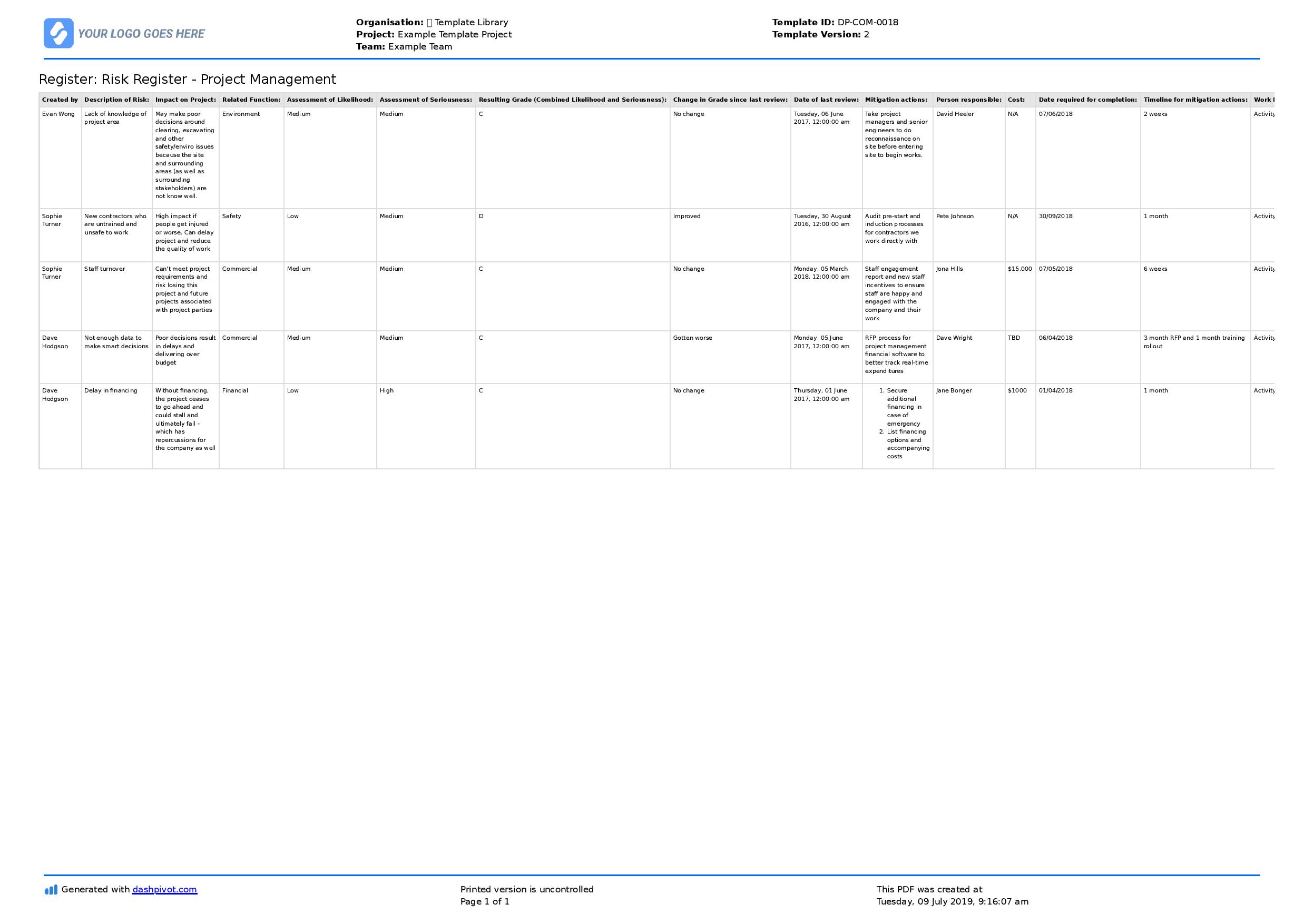
Use this risk log framework for free now.
Streamlining your risk log for project management
Risk is never fully managed, no matter how good or comprehensive your risk log is - especially as projects and their internal and external forces (weather, technology, funding etc.) evolve.
One of the most difficult aspects of risk logs for project management is that it is difficult to connect them between the office and on site.
The best laid brainstorming sessions and plans in the office can get lost or misdirected before they get to site or get implemented, in the same way that new risks identified on site or in the field often go unrecorded in the office or in the risk log.
To prevent this issue, and to connect the office and the site across many different processes in real-time, the best solution is often project management software.
These softwares enables workers to identify and document new and developing risks on site using a mobile or tablet, and then these risks are then auto-populated and synced into the risk log or risk logs.
Instead of the project manager or risk log manager getting unstandardised and incorrectly formatted information from site, they can ensure that everyone on site has access to the same risk or hazard report form. They can open this at any time and report a new hazard or risk, which is easier and faster for them, and improves the speed and accuracy of the data being received and inputted into the risk log.
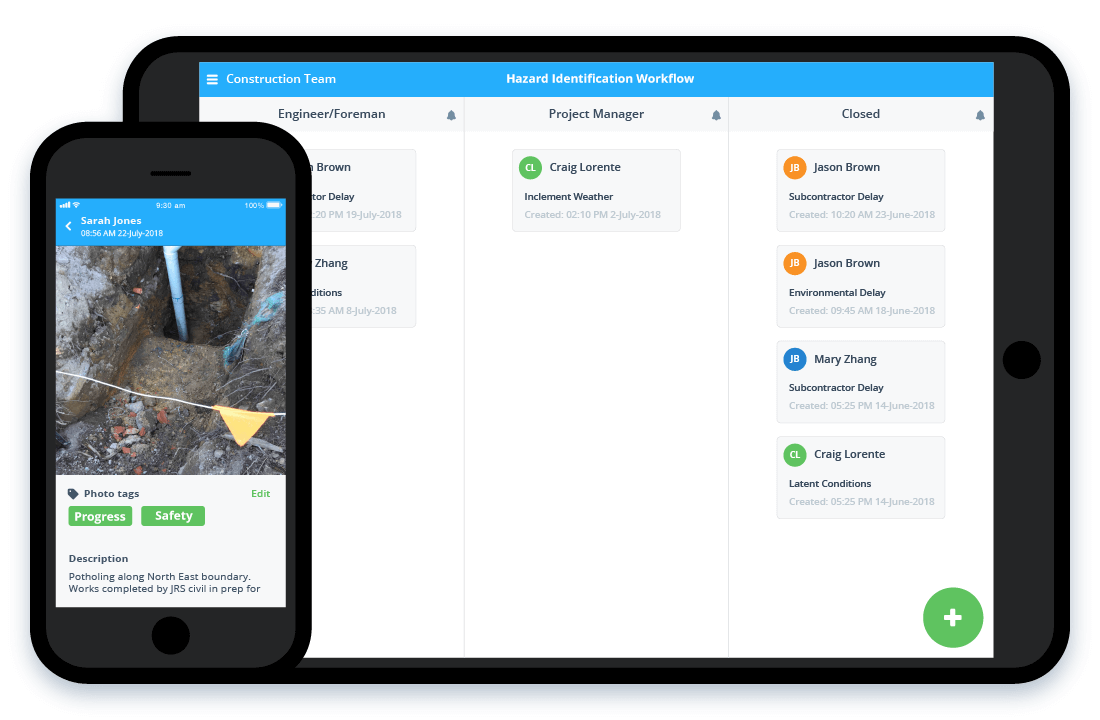
No matter how you choose to approach your risk log during project management, it's critical that you have a reliable method of documenting, organising and then tracking all of your risks in the risk log.
Risk logs are one of the most powerful risk management tools at your disposal, and risks of course present one of the most grave and ever-present dangers for your projects and your business.
Safety risks can result in injuries, lost productivity and fatalities; financial and commercial risks can mean the difference between a successful and failed project; and environmental risk can result in non-compliance and legal issues.
The list of risks for many companies is long, and the only way to keep it all managed well is through effective risk log and risk register management.

Risk Register template
A general risk register template you can use for documenting any type of project risk.
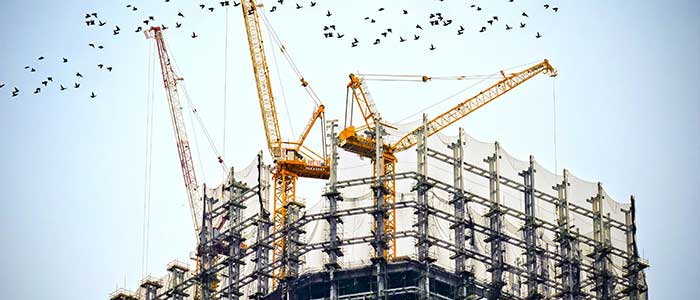
Meeting Minutes template
A risk register with example risks for construction companies and projects - which can be easily edited and added to.

Risk Register template for Project Management
A risk register with example risks for general project management - which can be modified and added to as you see fit.
